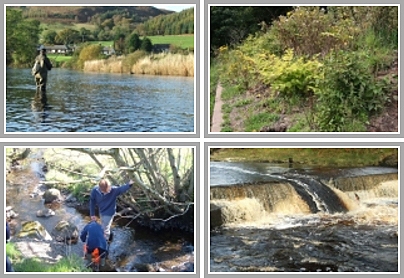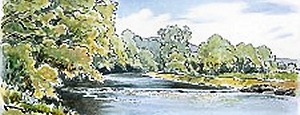We fenced this section of the burn a couple of years ago and used green engineering to stabilise what was very rapid and severe erosion. This was driven by livestock accessing the burn and margins and led to instability and loss of tonnes of soil from the field.
Our first attempt at green engineering was doing fine until the exceptional spate that occurred in November that year. A large tree was washed downstream and burst into the newly regraded bank and green engineering which was barely established. Our fence was left hanging in the middle and a big hole was made in the bank.
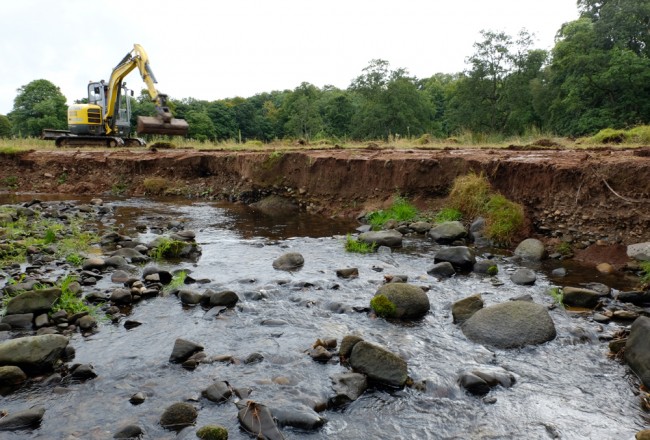
The situation as we started work was a sheer vertical bank that was eroding and contributing tonnes of soil to the burn
We re constructed willow spilling last summer but we couldn’t get a machine to the site to repair that damage. Sheep had access to the bank and grazed the new willow spilling. Overwinter, thew willow remained in place and earlier this year we secured a machine and sorted the bank and then the fence. This time we used a geotextile membrane to help strengthen the seeded bank until the willow cuttings and spilling develop adequate root systems to hold the bak together.
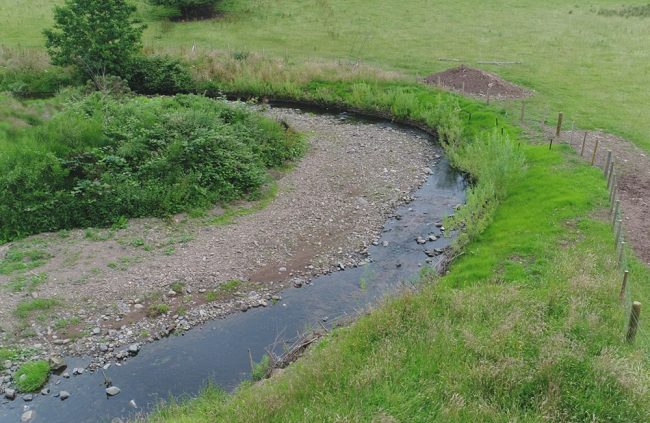
The current view with a gently sloping bank face and willow spilling. This should be more resistant to floods and the willow will buffer and slow the force of water against this bank as it develops. Livestock are now excluded and we expect water quality to improve. The landowner meets his responsibilities to protect the watercourse and the fish habitat is improving so everyone is a winner.
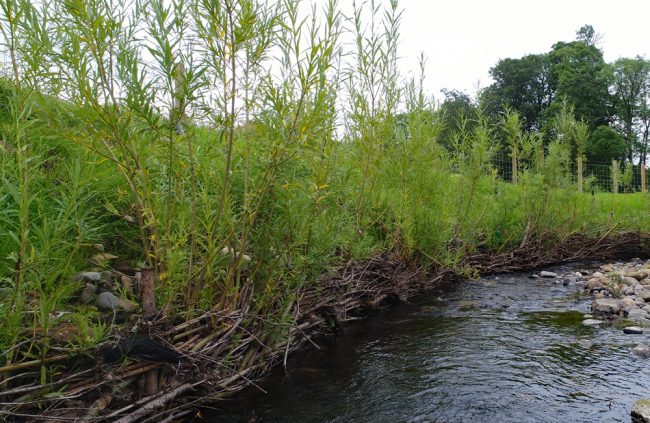
You can see many living shoots in the spilling but not all take. However, there’s more than enough here to achieve the desired results. Some plants are over 6′ tall already and we will cut some back periodically. This bank will provide a ready source of willow for future restoration projects elsewhere.
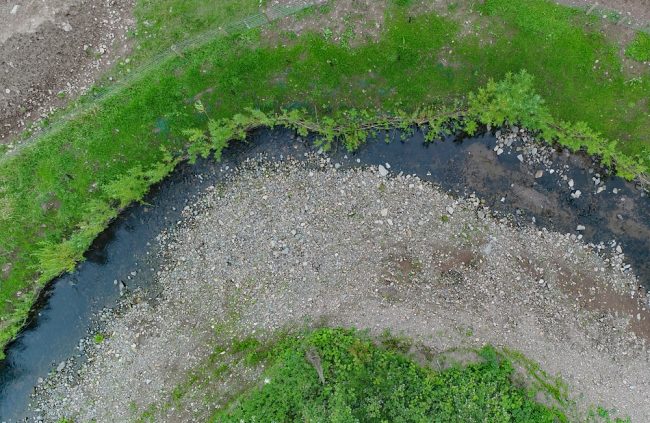
The centre section was where the original bank failed in the spate but this has been stabilised now and the willow is growing well. The root systems that are developing will help strengthen this bank in future. While we may have made mistakes when we did this originally, we are confident this will stand the test of time and floods.
So far things are looking good and the bank has greened up and the trees we planted are doing well. Again this work was funded through the DSFB and the levies. Improvements like this should cut the sediment, bacteria and faeces entering the burn and improve water quality (both for fish and bathers on the beaches at Ayr). The landowner benefits as his soil and land loss has halted. In just a few years time, the willows will shade the burn, provide cover for fish, reinforce the banking providing a living buffer that reduces the velocity of flow against the toe of the bank. Fish cover will rapidly improve as the willows establish. This is already happening as can be seen in the images attached to this post.
